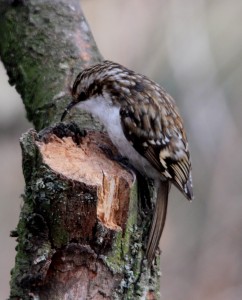 The sounds of wildlife, particularly birds, is an important part of our enjoyment of the countryside from gardens to woodland and coast to hill tops. Imagine then if a whole range of such sounds are missing to our ears. For various reasons, one main one being old age, this has already happened to many of us, including me. One problem is that we often do not register this has been happening, as we do not realise that a sound is missing as there are still plenty to hear with so much wildlife around. This is particularly the case in the summer when even stepping into the garden, especially early or late in the day, as bird song fills the air.
The sounds of wildlife, particularly birds, is an important part of our enjoyment of the countryside from gardens to woodland and coast to hill tops. Imagine then if a whole range of such sounds are missing to our ears. For various reasons, one main one being old age, this has already happened to many of us, including me. One problem is that we often do not register this has been happening, as we do not realise that a sound is missing as there are still plenty to hear with so much wildlife around. This is particularly the case in the summer when even stepping into the garden, especially early or late in the day, as bird song fills the air.
With me it started with bats as there are breeding colonies of brown long-eared bats and pipistrelle bats in the loft space. I used to like to see them emerging most evenings and I could sometimes hear their high pitched notes. Then suddenly I realised that whilst I could see them clearly enough I had stopped hearing them. As far as the birds are concerned, there are a number whose call notes or songs are pitched very high and these include grasshopper warbler, goldcrest and tree creeper. My lack of hearing of grasshopper warblers came about when a neighbour was waxing poetical about the number of these secretive warblers that were singing in the strath one year. I had not heard any at all so it set me thinking. The problem with the grasshopper warbler is that you very rarely see them as they stay deep in the thick undergrowth and you cannot always rely on their reeling calls to locate them. It is not that easy even with the song as they are renowned ventriloquists and whilst the bird may be calling from one place it is actually in another.
Reference books say the best way to locate goldcrests is by their call notes that are described as a high pitched, thin “tsee”. This is all very well if you can hear that sound. It does not help with the goldcrest that they are so secretive and difficult to see. After all they are, at a mere 9cm, Britain’s smallest bird and being mainly insect eating they very rarely come to garden feeders. They are also mainly a woodland bird, particularly the vast forestry plantations, and amongst the trees and shrubs they often go undetected – apart from those call notes. The goldcrest is also a very common bird and between 300,000 and 750,000 pairs nest in Scotland and the winter numbers may rise to 3 million with some birds coming from northern Europe to spend the winter here.
The tree creeper is another bird whose calls and song no longer registers with me. Its call is a high pitched “tsee, tsee” and the song can sometimes be heard at this time of the year. The books describes the song as a high pitched trill followed by a warble which is also hard for humans to hear. Apart from not registering the call, or song, there is also the problem in detecting the treecreeper by the fact it spends most of its time exploring by walking up trees and branches looking for insects. It will walk up, run might be a better word, up the bark foraging everywhere and then fly down to start on a another nearby tree or shrub. One of the reasons it can do this so well is the very stiff tail feathers that spread out on the bark as the bird ascends.
Tags: highland wildlife
